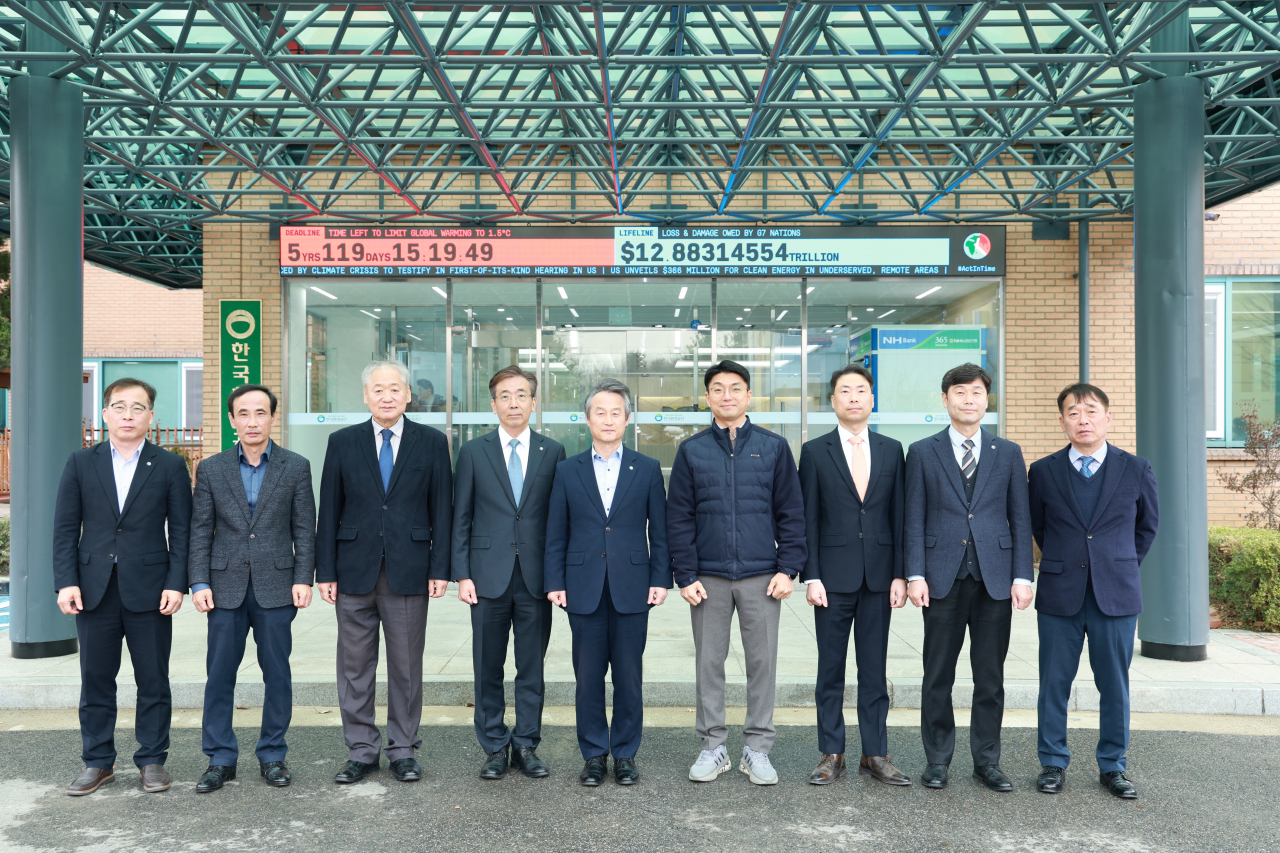Counting down days for climate action: 10th Climate Clock installed in S. Korea
By Shin Ji-hyePublished : March 26, 2024 - 13:47

The state-run Korea Environment Corporation in Seo-gu, Incheon, became the latest site to host a Climate Clock on Monday, marking the tenth installation of the clock in South Korea.
This significant event continues the journey that began in 2021, when the Herald Corp. headquarters in Seoul unveiled Asia's first digital Climate Clock, underscoring the nation’s growing commitment to environmental awareness and action.
The Climate Clock is a visually compelling reminder of the urgent need to limit the rise of temperatures globally to 1.5 degrees Celsius, aligning with the objectives of the 2015 Paris Agreement.
Conceived by American environmentalists Gan Golan and Andrew Boyd, this innovative timepiece made its debut in Berlin in 2019, followed by a prominent display in New York in 2020. South Korea joined this global initiative with its first Climate Clock installation by the Herald Corp.
The Climate Clock initiative transcends mere timekeeping, embodying a message of urgency and hope in the face of climate change. Designed to alert people about the critical state of our environment, these clocks offer a scientific basis for the time remaining to avert surpassing the 1.5-degree-C temperature increase. Strategically placed at iconic locations worldwide, the clock aims to shift public perception and galvanize action against climate change.
In a striking display of solidarity and awareness, the status of Christ the Redeemer in Brazil became a canvas for the Climate Clock in July last year, illuminating the night with its message. A month earlier, the United Kingdom hosted a significant moment during the Climate Innovation Forum attended by King Charles III, where a five-meter-tall Climate Clock was unveiled. The first Climate Clock was set up on Berlin's Gasometer in 2019, and in New York's Union Square in 2020.
The Herald Corp., as the exclusive partner of the Climate Clock in South Korea, has played a pivotal role in propagating the clock’s campaign in the country. Since its installation here in 2021, an additional nine key provincial governments have embraced the project.
The collaboration model requires private companies and governments to contribute licensing fees for the installation of the Climate Clock, which are then reinvested to empower people to take action against climate change. The funds support training programs to engage in climate-positive activities, foster the creation of project teams to construct new Climate Clocks and finance campaigns that promote a unified global response to climate change.
The primary objective of the clock is to extend the time frame we have to prevent the temperature from rising beyond 1.5 degrees Celsius, mainly through efforts to lower carbon emissions. Remarkably, this clock adjusts in real time; as carbon dioxide emissions decrease, the time available for action increases. A notable instance occurred in October 2021, when, at the height of the pandemic's economic slowdown, stoppages in manufacturing production led to a reduction in carbon emissions, consequently extending the clock’s countdown by approximately a year – from six years and 235 days when it was first installed by the Herald Corp. on May 13, 2021 to seven years and 295 days by Oct. 1 of the same year.
However, the reopening of industries and resumption of human activities reversed this progress. By July 2022, the time on the Climate Clock had shortened again to six years, mirroring the pre-pandemic level of urgency.
As of Tuesday morning, the time remaining to take climate action has further shortened, with the Climate Clock now indicating that only five years and 118 days remain to limit global warming to 1.5 degrees C.



















